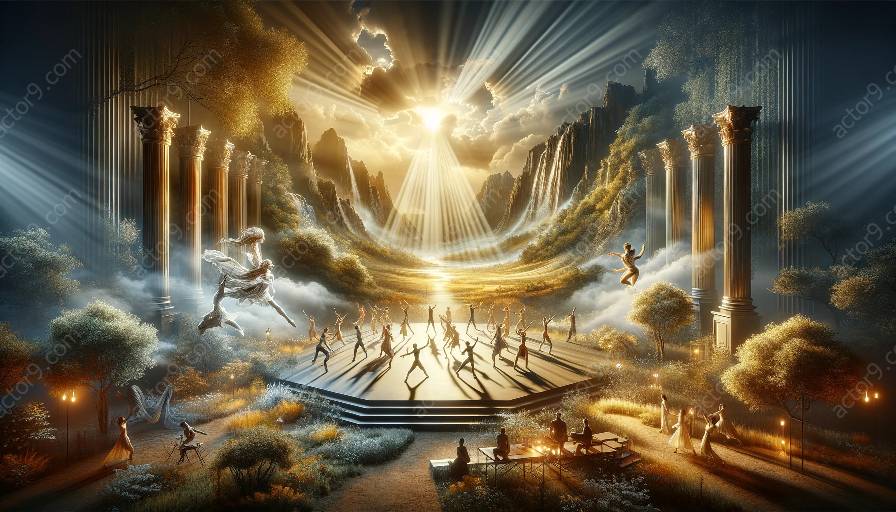Lighting plays a crucial role in physical theatre, influencing the audience's perception and emotional experience. Understanding the psychological effects of different lighting choices on the audience is essential for creating impactful performances.
The Role of Lighting in Physical Theatre
Physical theatre relies on the use of the body as the primary storytelling tool, often incorporating movement, gesture, and expression to convey narrative and emotion. Lighting in physical theatre serves as a powerful medium to enhance the visual and emotional impact of the performance, guiding the audience's focus, evoking mood, and creating atmosphere.
Psychological Effects of Different Lighting Choices
The psychological effects of different lighting choices in physical theatre performances are multifaceted, influencing the audience's perception in various ways.
1. Emotion Elicitation
Lighting can evoke and amplify emotions in physical theatre. For example, warm, soft lighting may create a sense of intimacy and tenderness, whereas harsh, cool lighting can evoke feelings of tension and unease. By manipulating the color, intensity, and direction of light, physical theatre practitioners can elicit specific emotional responses from the audience, enhancing the storytelling impact.
2. Visual Focus and Engagement
Lighting serves as a tool to direct the audience's focus and engagement within physical theatre performances. By highlighting specific areas of the stage or isolating performers through strategically placed light, the audience's attention can be guided to key movements, expressions, or elements of the narrative, enhancing the overall visual experience and comprehension.
3. Atmosphere and Mood Setting
The ambience and mood of a physical theatre performance are heavily influenced by lighting choices. Soft, diffused lighting may create a dreamlike or ethereal atmosphere, while stark, angular lighting can convey a sense of starkness and intensity. The interplay between light and shadow can evoke mystery, suspense, or tranquility, shaping the audience's emotional connection to the narrative unfolding on stage.
4. Symbolism and Metaphor
Lighting can be used symbolically to convey deeper meaning and metaphor within physical theatre. The interplay of light and shadow can mirror the inner emotional landscapes of characters, amplify symbolic gestures, or accentuate the thematic elements of the performance, inviting the audience to interpret and connect with the narrative on a symbolic level.
Impact on Audience Perception
The psychological effects of lighting choices in physical theatre directly impact the audience's perception and interpretation of the performance. Audience members experience a heightened sense of immersion, emotional resonance, and visual engagement when the lighting is thoughtfully designed to complement the narrative and enhance the physical expression of the performers.
Conclusion
The psychological impact of different lighting choices in physical theatre performances is substantial, shaping the audience's emotional journey and interpretation of the narrative. By understanding the role of lighting in physical theatre and its influence on audience perception, practitioners can craft compelling and immersive experiences that resonate deeply with their audiences.




































